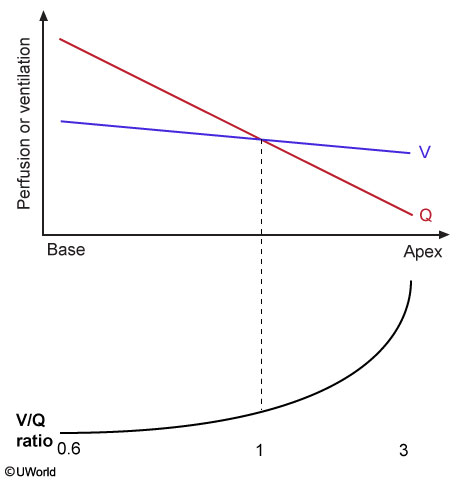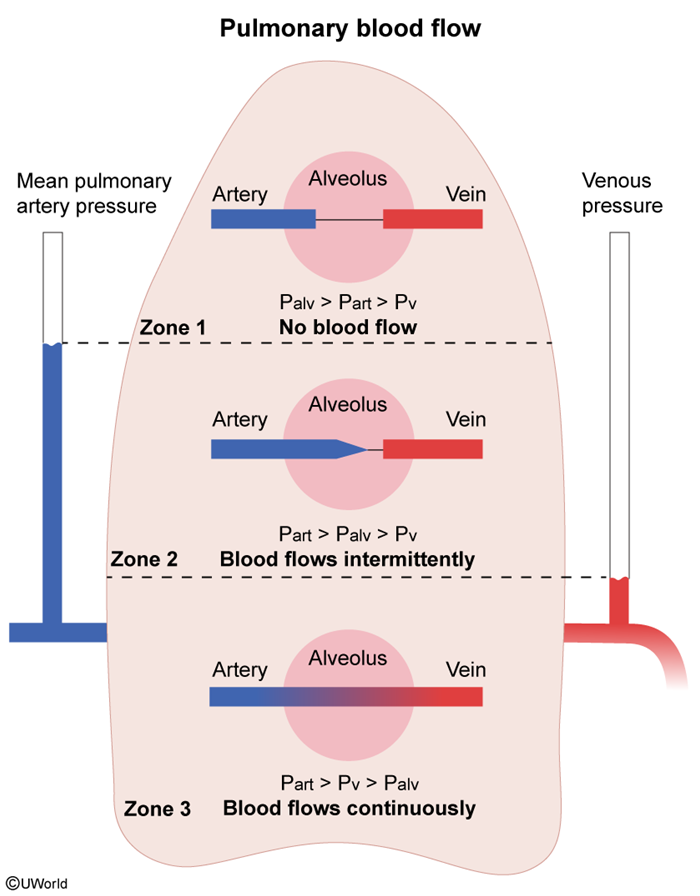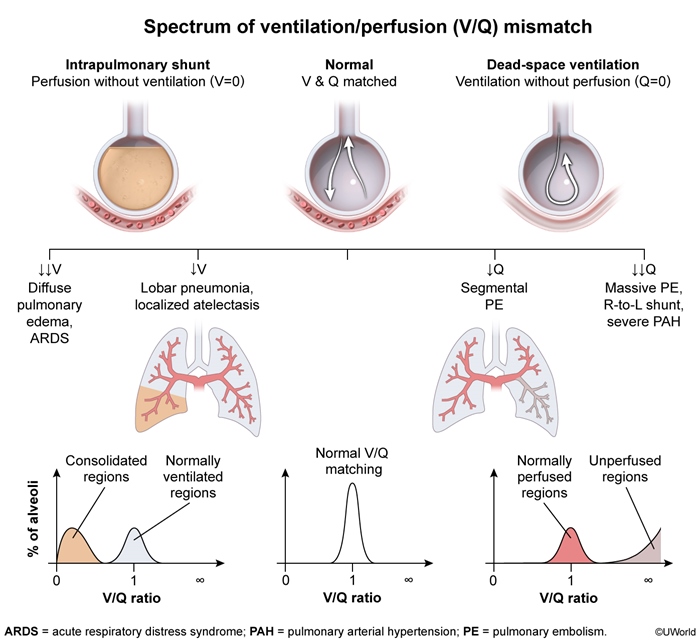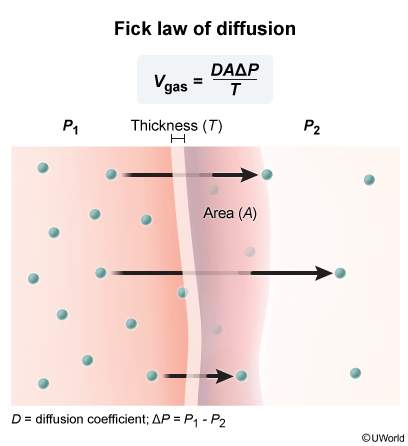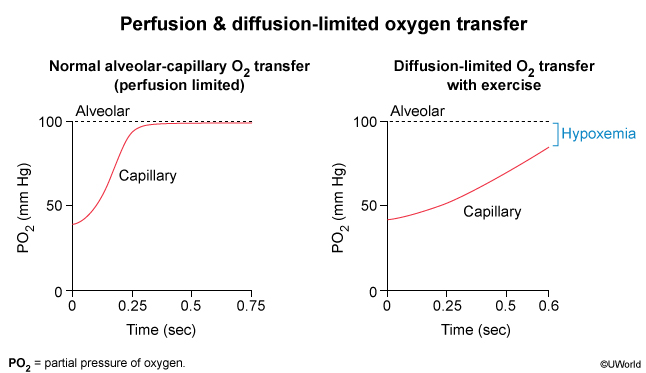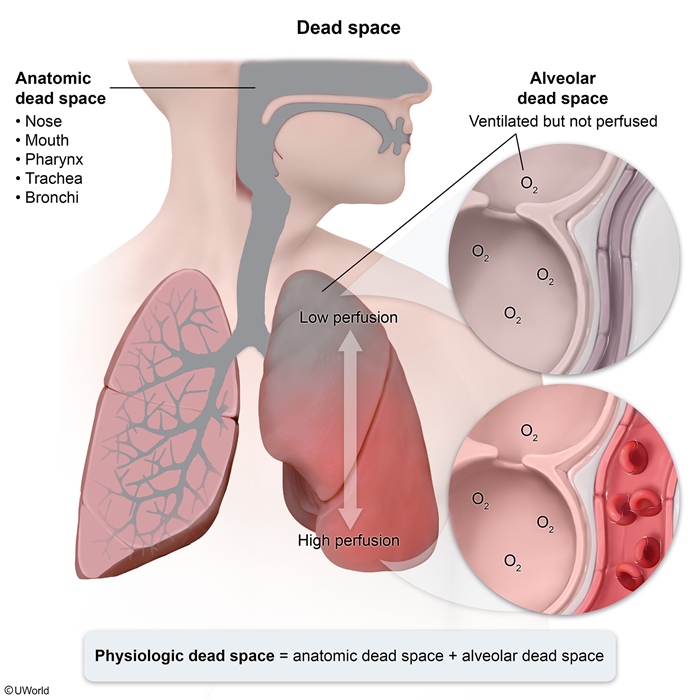Pulmonary Physiology: Gas Exchange
Article Sections
Introduction
Respiratory gas exchange involves the following processes:
- Oxygenation (oxygen extraction in the lungs).
- Ventilation (carbon dioxide elimination by the lungs).
- Oxygen and carbon dioxide transport in the blood.
- Respiratory quotient (carbon dioxide produced per oxygen consumed).
This article discusses these processes, how they are regulated at rest, and how they respond during exercise.
Oxygenation
Oxygenation refers to the extraction of oxygen in the lungs. Normal oxygenation requires:
- Normal inspired oxygen (ie, PiO2).
- Normal alveolar ventilation (ie, PaCO2), which requires normal minute ventilation and dead space.
- Normal alveolar-capillary exchange (ie, A-a gradient), which requires:
- Proper ventilation/perfusion (V/Q) matching.
- Efficient diffusion.
Ventilation (V) and perfusion (Q) matching can be conceptualized as the opportunity for oxygen uptake. Wherever air (ventilation) is present, there should be corresponding blood flow (perfusion). When ventilation is wasted on areas with insufficient blood flow (ie, dead space) or when perfusion is wasted on areas with insufficient ventilation (ie, shunt), V/Q mismatching occurs.
Continue Learning with UWorld
Get the full Pulmonary Physiology: Gas Exchange article plus rich visuals, real-world cases, and in-depth insights from medical experts, all available through the UWorld Medical Library.
Figures
